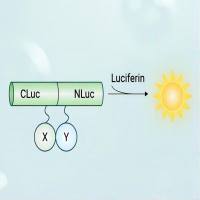High Resolution Imaging of Immunoglobulin G Antibodies and Other Biomolecules Using Amplitude Modulation Atomic Force Microscopy in Air
互联网
互联网
相关产品推荐

SLC31A1/SLC31A1蛋白/Copper transporter 1 Short name: hCTR1 Solute carrier family 31 member 1蛋白/Recombinant Human High affinity copper uptake protein 1 (SLC31A1) (Active)重组蛋白
¥69

荧火素酶互补实验(Luciferase Complementation Assay, LCA)| 荧光素酶互补成像技术(Luciferase Complementation Imaging, LCI)
¥5999

Recombinant-Rat-Interleukin-2-receptor-subunit-betaIl2rbInterleukin-2 receptor subunit beta; IL-2 receptor subunit beta; IL-2R subunit beta; IL-2RB Alternative name(s): High affinity IL-2 receptor subunit beta p70-75 CD_antigen= CD122
¥13328

Recombinant-Rat-Neurotensin-receptor-type-1Ntsr1Neurotensin receptor type 1; NT-R-1; NTR1 Alternative name(s): High-affinity levocabastine-insensitive neurotensin receptor NTRH
¥12544

Recombinant-Rat-High-affinity-immunoglobulin-epsilon-receptor-subunit-alphaFcer1aHigh affinity immunoglobulin epsilon receptor subunit alpha Alternative name(s): Fc-epsilon RI-alpha; FcERI IgE Fc receptor subunit alpha
¥10752
相关问答

